
#3 The Swimming Pool
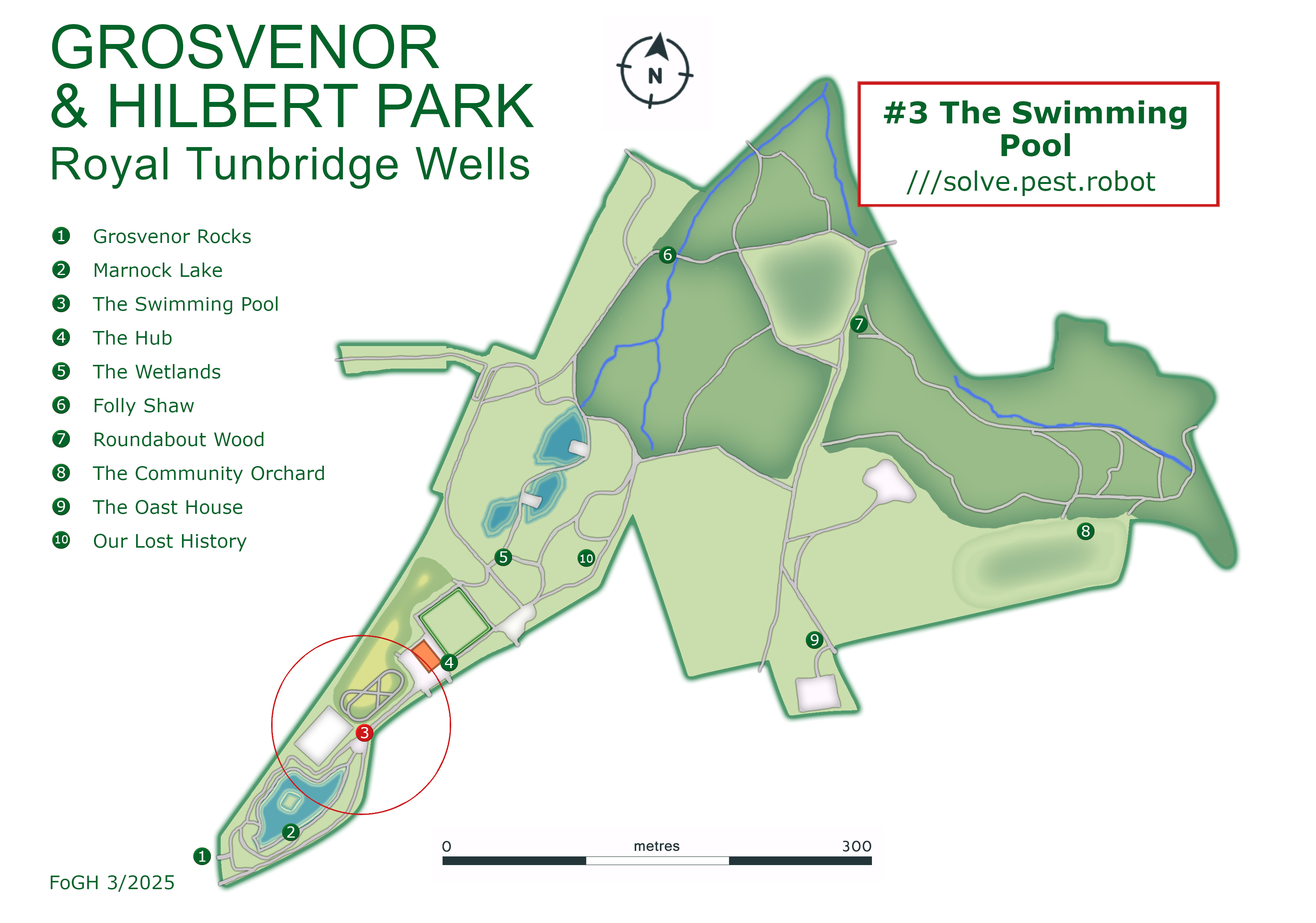
Originally part of the Water Works the area in front of you now was converted into a swimming pool in 1869 and was very popular for many years.
The Swimming Pool: History
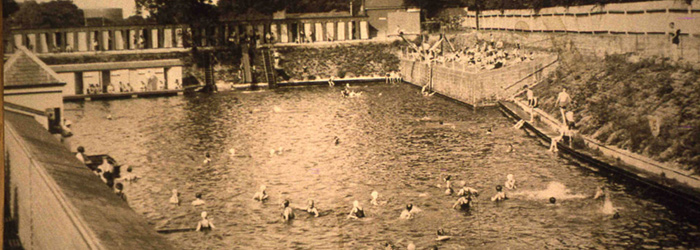
Once there was a huge swimming pool in the park! It covered the area where the hardball court, children's cycle track and blue-painted part of the playground now are. Originally it was one of three reservoirs, which were built in the 1820s to supply the town, using water from Jackwood Spring. These became redundant after a new reservoir was dug at Pembury, and the largest one became a swimming pool in 1869. It remained open for some 80 years, closing in 1948.
The pool was below ground level, accessed by a flight of steps. In the pictures the changing cubicles are on the railway line side. At first it wasn't anything like the kind of pool we are used to now - there were rough brick walls and banks covered with grass. The spring that supplies the Dripping Wells filled the pool with a continuous flow of very cold water. It was deep and there was no shallow end. Because it was open-air, soot from the railway line and leaves from surrounding trees could fall straight in, and there were frogs and newts!
Below is a link to a water polo match photographed by the Strand magazine in 1899, which shows what it was really like.
Just For Kids
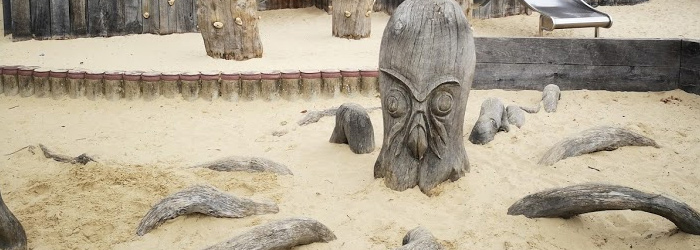
We don't think the old swimming pool would have had an octopus in it but can you find the one in the playground, how many legs will it have?
Playgrounds in the Park
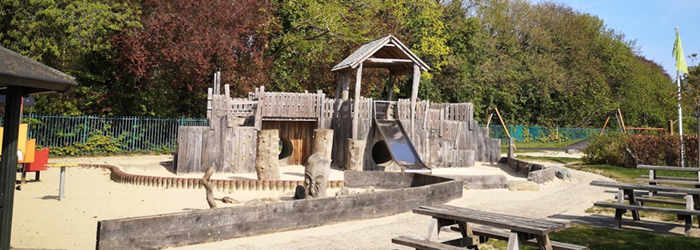
When the Park opened in 1889 it included a play area for children. That was roughly where the current Bowling Green is and included swings for children. In 1895 a shelter was built for the children's playground, but it was converted into a bowls pavilion when the Bowling Green opened in 1912. The playground was moved, with local oral history suggesting it was put near the Auckland Road entrance.
What Next: The Hub
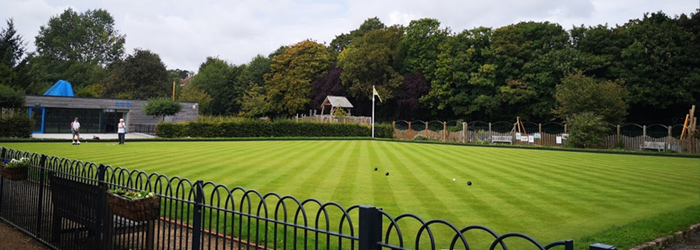
Continue along the path until you reach the Hub.